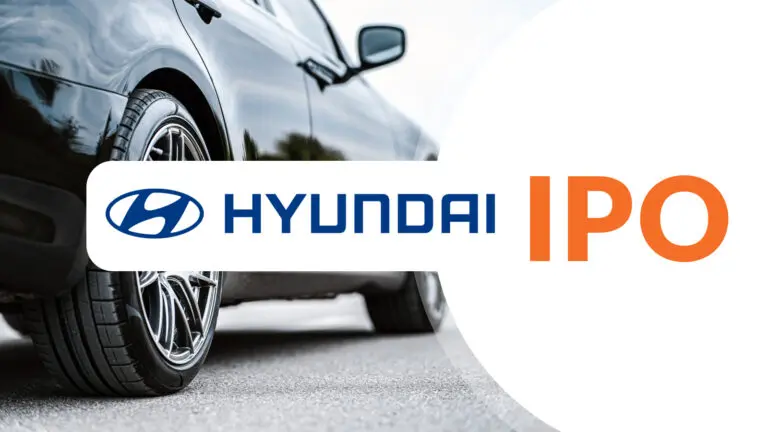Hyundai IPO: The Most Anticipated Event in Indian Capital Markets
I welcome you all to the most awaited IPO video about Hyundai Motor India Limited. Many people have their own way of pronouncing “Hyundai.” I’ve heard “Hundai,” “Hundai,” and from friends who visited Korea, I’ve learned that the correct pronunciation is “Hyundai.” So, I’ll stick with that.

Why is this IPO the talk of the town? The reason is simple: it’s one of the biggest IPOs set to hit the Indian capital markets, with an expected total amount of around ₹27,000 crores. That’s a huge amount! When the numbers are this big, retail individual investors get particularly excited because their chances of allotment increase.
Reflecting on past big IPOs, we recall the LIC IPO—many of you likely remember its listing and subsequent performance. I did a Google search to find the top 10 IPOs based on issue size and check their performance after the first month. What I discovered might surprise you.
Let’s start with some key points. I found this table online showing the issue sizes:
- LIC: ₹21,000 crores
- Hyundai: ₹27,000 crores
- Adani: ₹20,000 crores
- Paytm: ₹18,300 crores
- Vodafone: ₹18,000 crores
- … down to NMDC: ₹9,930 crores.
We’ll analyze the performance of these IPOs based on Technical Analysis. Starting with LIC, from its first month high to the lowest point, it’s down 42%. Paytm has seen a staggering drop of 84%. Vodafone initially surged, but is now down 85% from its first month high. Coal India fell 32%, and Yes Bank is almost flat.

Hyundai Motors may not follow the same trajectory just because these companies performed poorly. My intention in showing this data is to highlight a historical trend: when big ticket IPOs come to market, there’s often a withdrawal from the secondary market as investors look to funnel their money into primary markets. This can create selling pressure, negatively affecting sentiment and, in turn, the performance of new IPOs.
And Hyundai isn’t the only big IPO on the horizon—Swiggy and Afcons Infrastructure are also set to launch. This influx of large IPOs could intensify selling pressure, potentially impacting Hyundai IPO‘s listing.
For those of you feeling overwhelmed by the data, don’t forget to check out my Technical Analysis course. You can use the limited-period coupon code IPO to invest in your knowledge.

Now, let’s focus on Hyundai itself. The company primarily manufactures and sells four-wheeler passenger vehicles and parts, both in India and internationally. They are classified as an OEM (Original Equipment Manufacturer), making them a significant player in the automotive industry.
Hyundai currently has 13 passenger vehicles in its portfolio, spanning various segments like sedans, hatchbacks, SUVs, and electric vehicles. Globally, they rank as the third largest in terms of sales for the calendar year 2023, while in India, they hold the position of second largest OEM since fiscal 2009.
When we look at market share, Maruti Suzuki leads with 51%, though it has seen a decline to 41% recently. Hyundai’s market share decreased from 16.3% in 2019 to 14.6% now. Kia, their sister concern, has grown from 3.1% to 6%.
The passenger vehicle segment is expected to grow globally at 6.8%, but in India, the growth rate is projected at 15.4%. This is significant as India’s per capita income is expected to grow at 99.4% CAGR from 2024 to 2029, suggesting increased spending power, which bodes well for the automotive sector.
However, despite the potential, car penetration in India is low—only 26 out of 1,000 people own a car compared to 594 in the USA. This indicates a substantial headroom for growth in the industry.
Financially, Hyundai has seen impressive growth, with revenue increasing from ₹47,378 crores to ₹69,800 crores, and profit soaring from ₹2,900 crores to over ₹6,000 crores in 2024. However, they face challenges in the EV market, where their share stands at only 1.1% compared to Tata Motors, which commands over 70%.

Pending litigations against the company amount to ₹6,200 crores, which is concerning, especially when this is close to their projected profit.
When compared to peers like Maruti Suzuki and Tata Motors, Hyundai’s revenue and earnings per share (EPS) lag behind, although they boast a decent return on net worth.
Regarding valuations, the industry PE is at 23.57, while Hyundai’s expected upper band PE is 26.28, indicating a higher valuation compared to industry averages.
The object of the IPO is critical: it’s a 100% Offer for Sale (OFS). Not a single rupee will benefit the company; all funds will go to Hyundai Motor Company in Korea.
Mark your calendars: the IPO runs from October 15th to 17th. With no fresh issue and a 100% OFS, it’s crucial to understand these dynamics as we prepare for what could be one of India’s largest IPOs.
I hope this summary of the Hyundai IPO has been informative. If you found it helpful, don’t forget to smash the like button and share this video with your friends.
Until next time, take care, Jai Hind, and goodbye!
